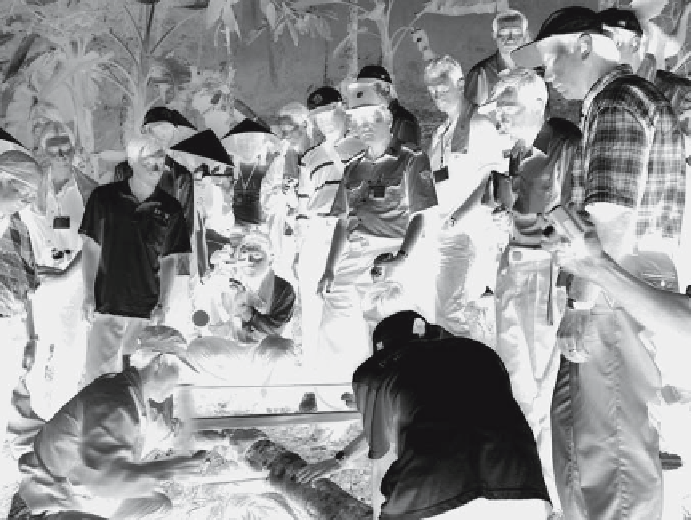Agriculture Reference
In-Depth Information
technology, this time frame has now been shortened to 15 to 18 months. The agar-
wood produced in this way turns out to be suitable for the production of incense
sticks and medium grade oil (Eurlings and Gravendeel 2005, 2007).
In the past 10 years agarwood tree plantations really began to take off with an
enormous boost in planting in the last few years. This was driven by the higher
pricing caused by lack of supplies of forest based agarwood, and the successful
inducement technology, fueled by hope and rumors as well as by serious concerted
research efforts.
As stated above agarwood is the woody part of
Aquilaria
and
Gyrinops
trees
containing resin. Agarwood only rarely and infrequently occurs in those tree spe-
cies naturally. Wounding trees triggers resin formation. This resin in
Aquilaria
or
Gyrinops
trees forms very slowly and fills areas around the wound(s) to fend off
pathogens such as bacteria and fungi.
A first generation of domestication processes was developed in 1996-1997,
using drill wounds and a variety of biological agents such as fungi. However, while
superior to previously known inducement methods, UMN/TRP research and hun-
dreds of field tests showed limited amounts of resin formation and inconsistent
results with this early technology.
In contrast, consistent results are obtained when the second generation advanced
inducement technology is applied: holes are drilled into the tree in a particular pat-
tern, a special mix of chemicals is inserted, and special PVC tubes are inserted and
Photo 12.3
Demonstration of Agarwood harvesting in An Giang, Vietnam (©GA Persoon)

Search WWH ::

Custom Search